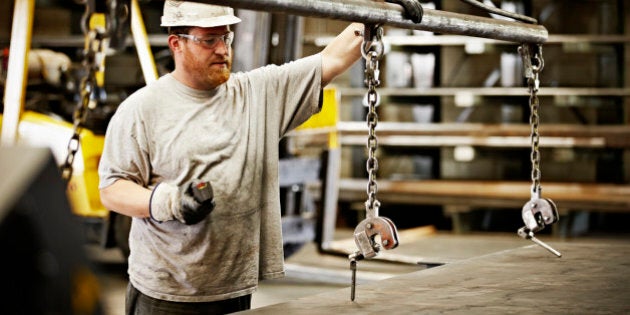
It's an annual rite of passage. Graduation ceremonies are underway at high schools across the province, as students get set to take their skills to the next level. At 84 per cent, B.C.'s high school graduation rate has never been higher. While that's reason to celebrate, we should also be asking why the province's apprenticeship programs aren't achieving anywhere near the same success rates.
Imagine if high school students had just a 50/50 chance of graduating. That's how it is for young people enrolled in B.C.'s apprenticeship programs. Only about half will graduate, with many dropping out in their first or second year. Other jurisdictions have higher completion rates such as Manitoba (68 per cent), New Brunswick (65 per cent) and Nova Scotia (61 per cent). The B.C. rate is even more disappointing when compared internationally. Austria for example, has an apprenticeship completion rate of 85 per cent. In Switzerland, it's 91 per cent.
It's not that a lot of effort and funding hasn't gone into attracting more young people to skilled trades. By 2017-18, roughly $68 million will be invested in B.C. through the Canada-B.C. Job Grant, aimed at supporting industry and skills training. It's not that anyone questions the value of skilled trades. That's well established. We're in the midst of a major demographic shift with 22 per cent of B.C.'s skilled workforce retiring this decade. That means B.C. will need to replace over 39,000 baby boomers retiring from construction in the next ten years.
As technology advances, our economy depends on our workforce's ability to skill up. That's why Canada in general, and B.C. in particular needs to rethink its approach to skills training and move with the times. The cookie cutter/one-size-fits-all approach clearly isn't working, not when so many young apprentices drop out.
Today, skilled tradespeople are in demand, allowing them to pay off schooling costs far faster than many university grads with soft skills.
That message was clear at the annual Canadian Apprenticeship Forum this month in Vancouver, where employers were given a long overdue nudge. More employers need to better understand and recognize each apprentice's potential. Partnering a mentor and apprentice also helps them manage their expectations and aspirations and stick with their career plan. As the millennial generation makes up an increasingly larger segment of our workforce, a major adjustment is required in the way employers engage and motivate young apprentices.
This is a generation that grew up online, and thrives on more innovative approaches to learning. Virtual classroom training for example, allows an instructor anywhere, to speak to apprentices in real time, so they get classroom training while on job sites, no matter how remote. Our labour partner CLAC launched virtual classroom training in 2014. Since then, instructors at Thompson Rivers University have provided training to over 100 workers at as many as 15 remote job sites and communities across B.C.
Not only employers, but also parents and guidance councilors could use a change in approach. For too long the skilled trades have been viewed as a plan B. It shouldn't be either or, but both. In Europe, a lot of students already have a trades certificate by the time they graduate high school. They start their careers with a skill, whether they build on it, or move in a different direction. When I was in college, I also worked in concrete form fitting and carpentry, earning extra money and gaining skills that I've put to use to this day. There is no downside to learning a skill.
Today, skilled tradespeople are in demand, allowing them to pay off schooling costs far faster than many university grads with soft skills. When comparing return on investment for education, skilled trade programs offer a real advantage, especially in today's changing economy. For kids struggling to pay off hefty student loans on a meagre salary, that's a difficult lesson. It's also a reality check for the next crop of high school graduates who inevitably ask the same question. "What do I do now?" They should be encouraged to learn a useful skill, and just as importantly, stick with it.
This blog first appeared in the Vancouver Sun on June 25, 2016.
Follow HuffPost Canada Blogs on Facebook
ALSO ON HUFFPOST:
